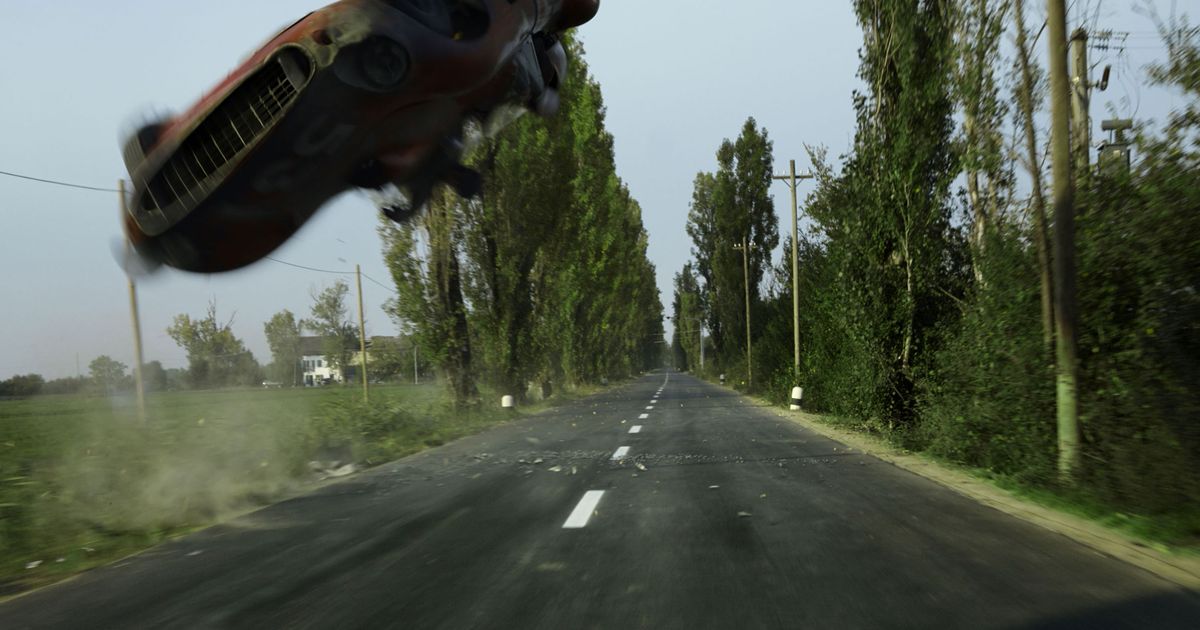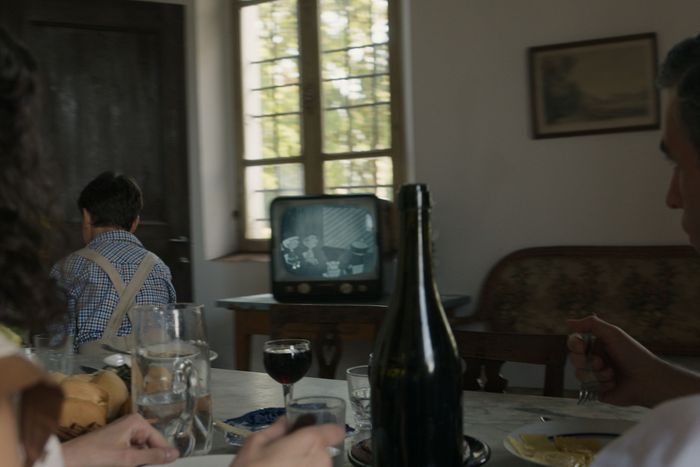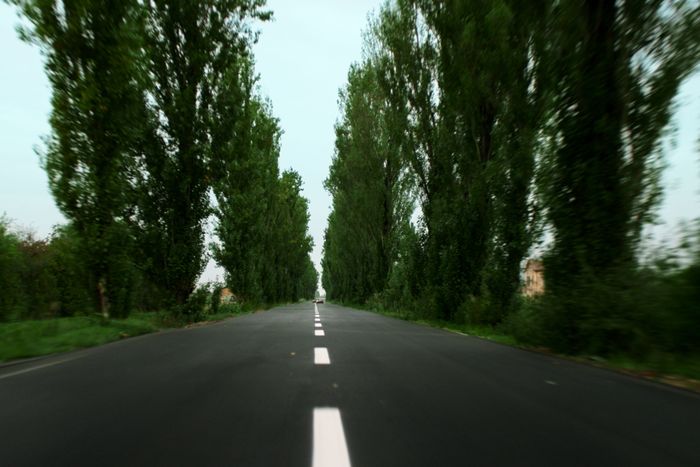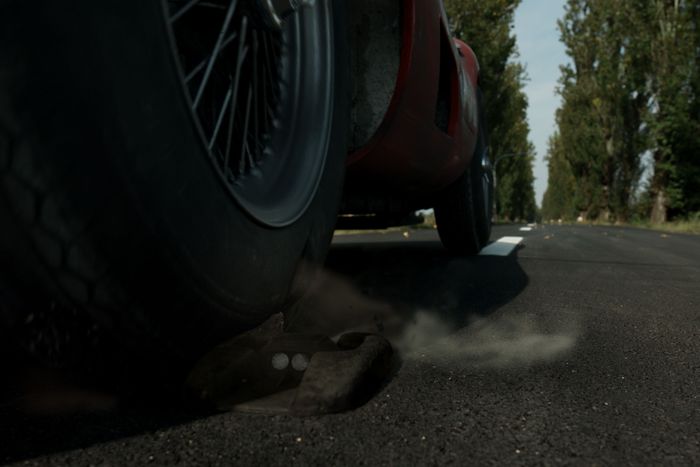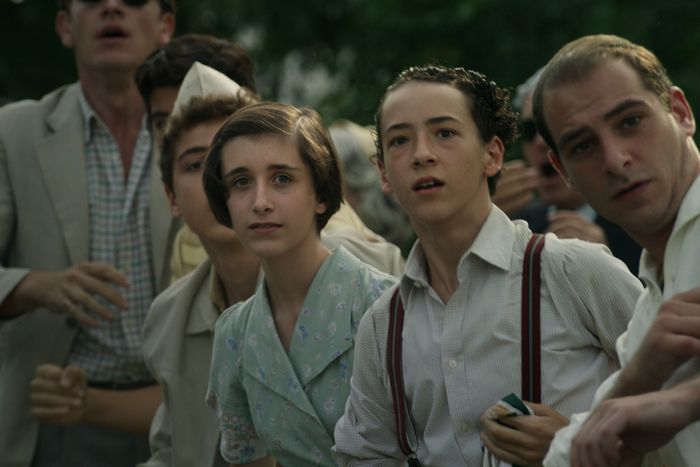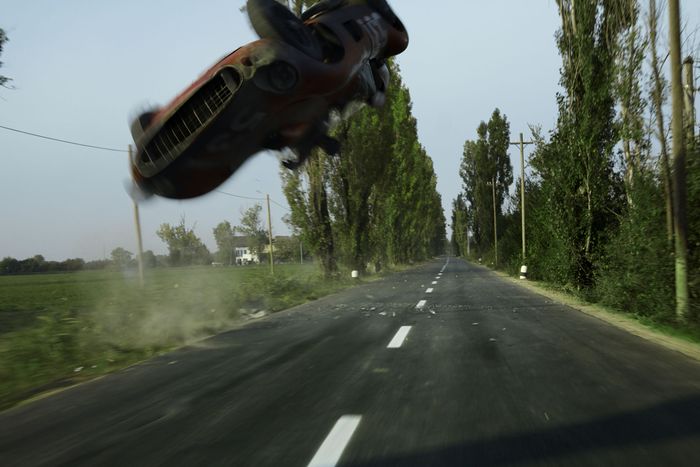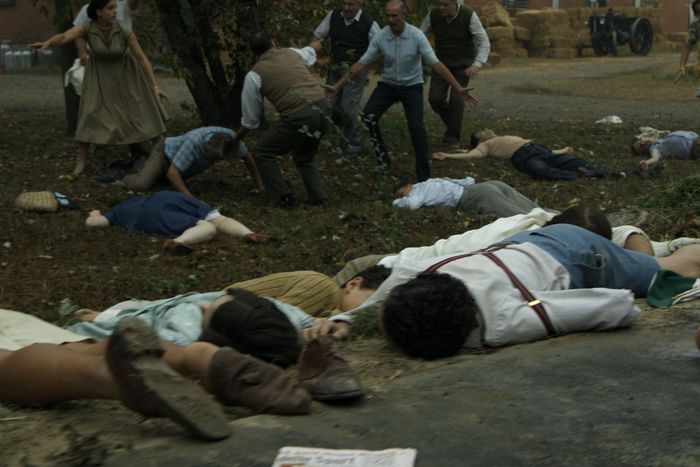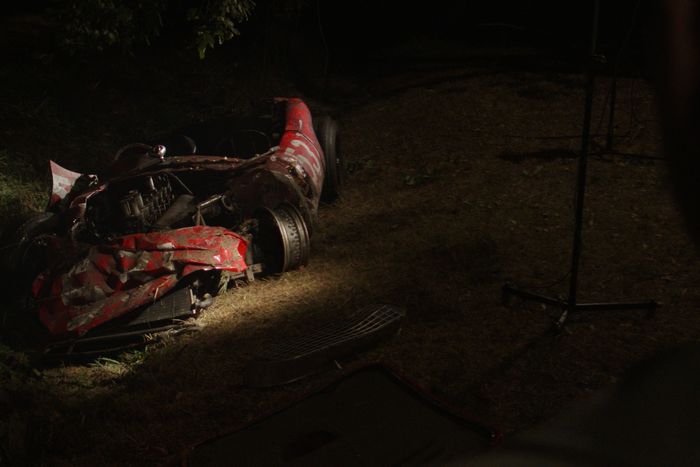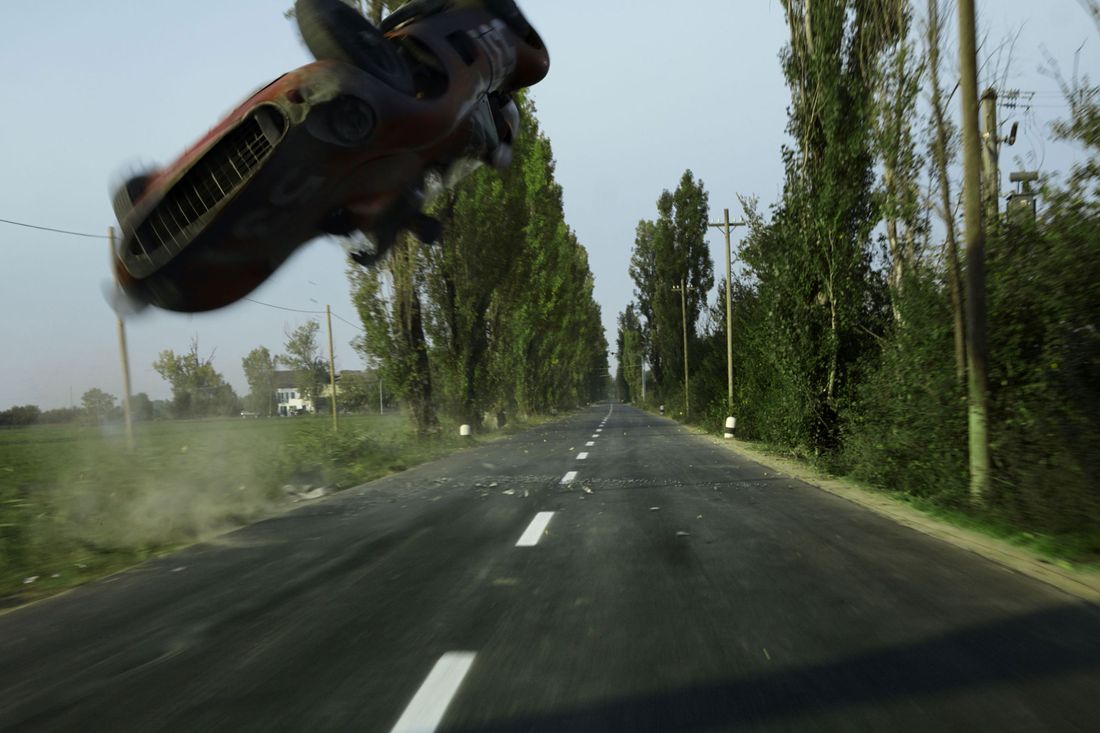
Photo: Courtesy of Neon
The climactic scene in Michael Mann’s Ferrari is a shocking re-creation of one of the most infamous disasters in racing history: the 1957 crash in Guidizzolo that killed 11 people, including Ferrari driver Alfonso de Portago (played by Gabriel Leone in the film) and five children. We’ve seen many car crashes onscreen over the years, but they’ve never been quite this traumatizing. Such scenes are usually spectacles, filled with nifty cuts (usually to hide stunts and effects work) and dramatic music. Mann opts for a ruthless, matter-of-fact approach, keeping his camera at a medium distance and refusing to pull away from the devastation. By removing anything that smacks of style or artifice, he brings us face-to-face with the full tragedy of what’s happening. He even slows the action slightly to make sure we really see it. Then he shows us the gruesome aftermath.
While scouting the site of the original crash, Mann and his location manager Janice Polley were approached by an elderly man with a cane who told them he witnessed it when he was 3. His family had been having their Sunday-afternoon dinner when they heard the fastest cars approaching. His 9-year-old brother ran out and got to the side of the road first and was killed in the crash. Mann wrote the scene into the script.
Photo: Courtesy of Neon
The roads in Guidizzolo look different than they did back in 1957, so the production scouted a different location near Modena for the scene. Mann made sure there were rows of cypress trees, as the original road had, because he wanted it to feel like de Portago was driving down a “tunnel of fate” to his death.
Photo: Courtesy of Neon
Spectators at the crash scene in 1957 reported hearing the telltale hiss of a tire blowing out. Much of what the car did was determined forensically. “We know what the car is supposed to do from the police reports,” says Mann. “We know that it was going about 160, 170 miles an hour when it got airborne.”
Photo: Courtesy of Neon
A combination of extras and stunt people made up the spectators. When the car was about to launch, the crew replaced the crowd with mannequins on stands to use as markers that would later be replaced by digital versions of these same people.
Photo: Courtesy of Neon
The car’s front tire explodes and it spins out of control. Eyewitnesses to the actual crash couldn’t see the car because of the tremendous amount of sand it kicked up as it went off the road.
Photo: Courtesy of Neon
De Portago’s car hits a telephone pole before bouncing off that and into the crowd. This was an important matter of record because the crash took out the power lines and nobody knew what had happened for a couple of hours. It’s also possible that the telephone pole was what initially cut de Portago’s body in half.
Photo: Courtesy of Neon
Mann wanted the bulk of the crash to occur in one unbroken shot so that viewers could really see the destruction. He and his team looked at BBC footage of a famous 1955 disaster at Le Mans when a car flew into the crowd and killed 83 people. “You see this car coming, seemingly benign, until you realize what’s happening—that it’s mowing down these people,” Mann says. “It’s a hot, flaming metallic scythe cutting through human bodies. And that very much influenced how I shot them.”
Photo: Courtesy of Neon
Mann and his team put the extras and stunt people back in position based on how the mannequins landed after the crash scene. They took care to arrange de Portago as his body was originally found. Mann did omit the fact that de Portago was also disemboweled. “It’s all very grim stuff,” he says. “But it was important to be authentic with it. I wanted him to be as inanimately dead as possible to land the tragedy of it.”
Photo: Courtesy of Neon
Working from archival photographs, Mann and his team stuck close to the images of the wrecked Ferrari in the aftermath of the crash—from its final resting place right down to the bent steering wheel.
Photo: Courtesy of Neon
